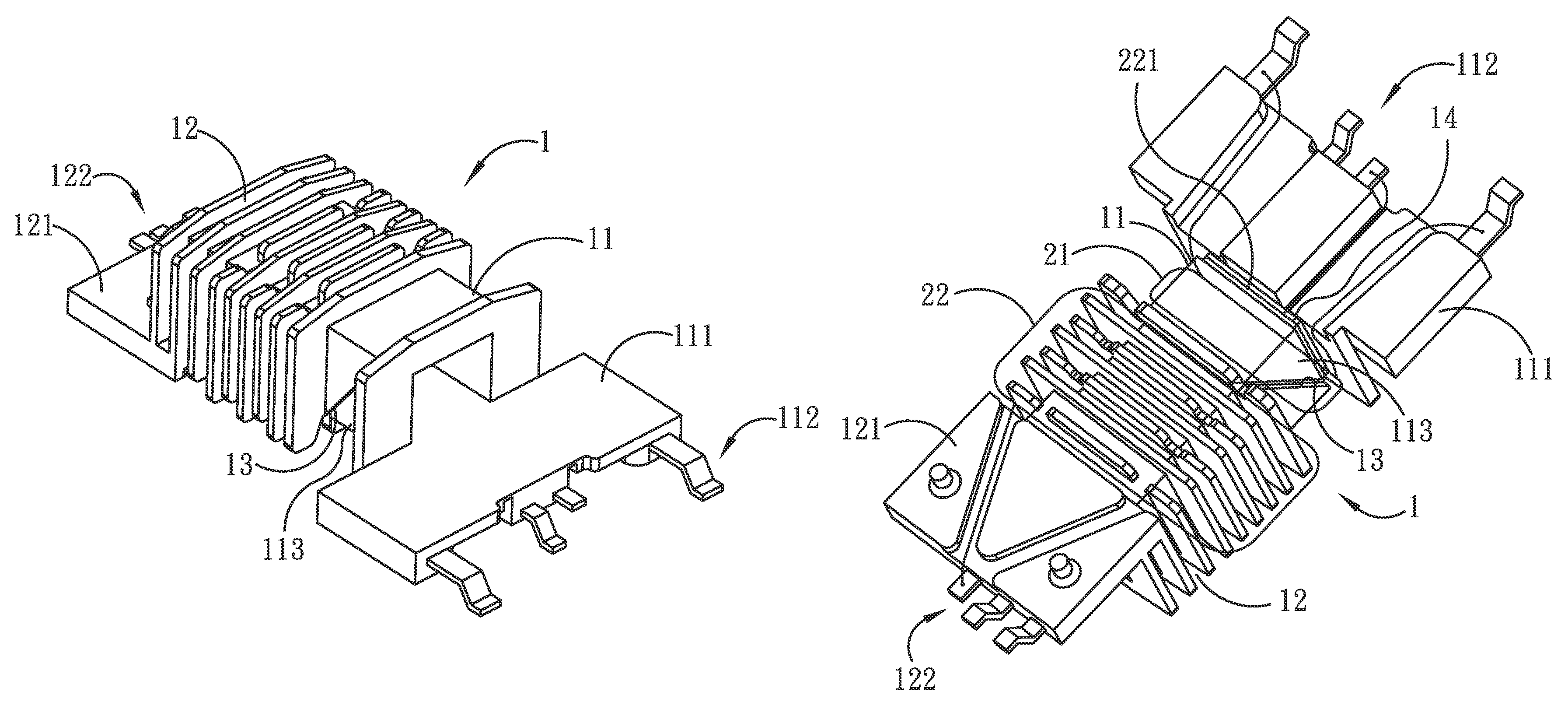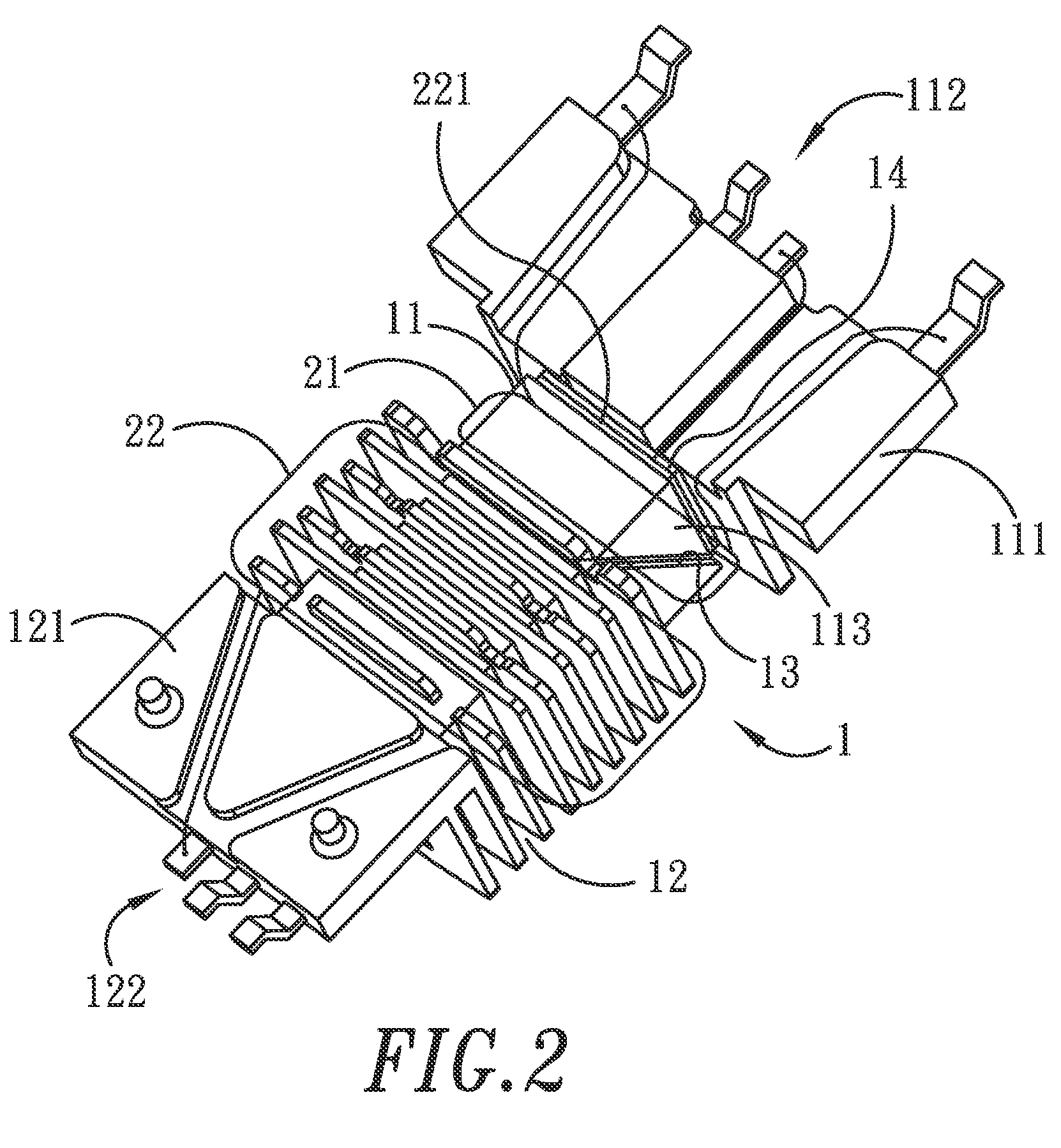Transformer
a transformer and transformer technology, applied in the field of transformers, can solve the problems of short circuit damage, prone to breakage, etc., and achieve the effects of improving stability, improving quality and reliability, and easy and fast troubleshooting and repair
- Summary
- Abstract
- Description
- Claims
- Application Information
AI Technical Summary
Benefits of technology
Problems solved by technology
Method used
Image
Examples
Embodiment Construction
[0024]Please refer to FIGS. 1 to 3, which illustrate the improved transformer of the present invention. The improved transformer of the present invention comprises a main body 1 and a secondary winding 22. The main body 1 has a primary winding partition 11 and several secondary winding partitions 12. A primary end piece 111 is disposed near the primary winding partition 11, and several primary leads 112 are provided in the proximal edge of the primary end piece 111. Similarly, a secondary end piece 121 is disposed near the secondary winding partitions 12, and several secondary leads 122 are provided in the distal edge of the secondary end piece 121.
[0025]A step-like sunken area 113 is formed on the primary winding partition 11. A wire-guiding area 13 is formed between in the sunken area 113. A buffer region 14 is formed between the primary end piece 111 and the primary winding partition 11. The buffer region 14 is formed in a sunken region between the primary end portion 111 and the...
PUM
| Property | Measurement | Unit |
|---|---|---|
| area | aaaaa | aaaaa |
| current | aaaaa | aaaaa |
| electrical energy | aaaaa | aaaaa |
Abstract
Description
Claims
Application Information
 Login to View More
Login to View More - R&D
- Intellectual Property
- Life Sciences
- Materials
- Tech Scout
- Unparalleled Data Quality
- Higher Quality Content
- 60% Fewer Hallucinations
Browse by: Latest US Patents, China's latest patents, Technical Efficacy Thesaurus, Application Domain, Technology Topic, Popular Technical Reports.
© 2025 PatSnap. All rights reserved.Legal|Privacy policy|Modern Slavery Act Transparency Statement|Sitemap|About US| Contact US: help@patsnap.com



